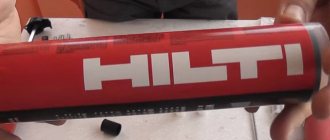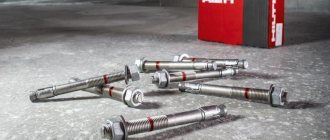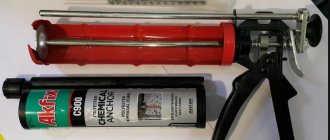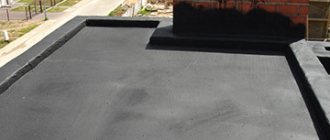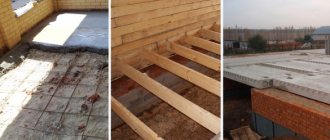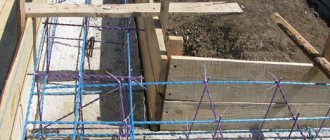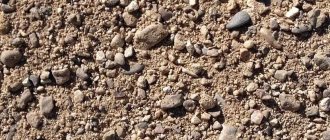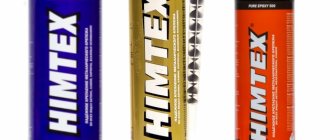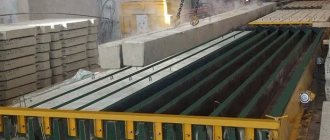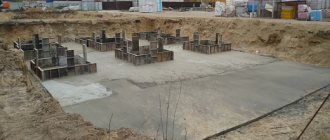- 1 Purpose
- 2 Varieties 2.1 HIT-RE 500
- 2.2 HFX
- 2.3 HIT-ICE
Hilti chemical anchors are fastening elements for all structures in construction; they are dowels. Today, their use is popular for many consumers, because they are quite effective fasteners. But until recently, anchors were considered a luxury and an easily replaceable exotic item.
Purpose
Anchors are used in various construction works, because a situation may often arise when it is not possible to use expansion dowels. After all, they are made of plastic or metal, so they will not be able to provide reliable fixation. Hilti anchors also have the ability to fasten any elements in hollow building materials. To increase reliability, it is recommended to purchase hexagon studs for anchors.
They hold well in the middle of such porous materials as: expanded clay concrete, cellular concrete, limestone, shell rock, sandstone. It can also be used for reliable fixation in fairly dense concrete; it will simply be impossible to pull it out, which is also important to consider when working. They are used in plasterboard connections, transformer devices, during the installation and construction of swimming pools and bathrooms.
Return to contents
Types of anchors and their features
Currently, Hilti produces several types of anchors:
- chemical;
- spacer;
- driving.
Chemical anchors
A chemical anchor is a special dowel that is equipped with an adhesive composition for fixation in materials such as:
- hollow brick;
- expanded clay concrete;
- shell rock;
- limestone and so on.
Thanks to its features, the attachment to porous substrates is highly durable and extremely reliable. However, replacing such a fastening element, if necessary, will be quite difficult, since the base will have to be somewhat destroyed.
Currently, chemical anchors are produced in two types:
- Chemical capsules (marked HVU). The devices are a container (most often made of polyethylene) of a certain size, inside of which there is a two-component adhesive composition. Upon contact with a metal dowel, the container depressurizes and, under the influence of air, mixes and hardens, thereby fixing the fastening element. The main advantages of this type are the speed and ease of installation. Negative qualities include the relatively high cost and dosage of the adhesive composition, which does not allow achieving strong fixation of the anchor when installed in large-volume voids.
Capsule chemical anchor
Only one fastening element can be secured using the anchor capsule.
- Chemical injections (marked HIT) are two-capacity ampoules, one of which contains the adhesive composition, and the other contains the hardener. Unlike capsules, injection dowels can be produced in different volumes, which facilitates reliable fastening even in voids. Another advantage of this type is the lower cost, justified by the use of glue of a different composition. A significant disadvantage of the injection anchor is the need to purchase (rent) additional equipment for installation.
Injection Type Chemical Anchor
With the help of injection anchors, several fastening elements can be secured simultaneously.
Expansion anchors
Unlike a chemical anchor, an expansion anchor is a more standard fastening element. As the threaded rod is tightened, the spacer part of the anchor increases along its entire length, which allows you to create strong fastenings even for massive structures.
Standard anchor for fastening heavy structures
Depending on the type of base to which additional elements need to be attached, the following types of anchors are distinguished:
- for concrete with cracks – HST/HST3. this type can also be used for installation in areas with seismic activity;
- for solid bases - HSA or HSV (a more budget option, also highly durable);
- for fastening heavy structures - HSL 3 or 3G.
Unlike chemical fasteners, expansion anchors can be replaced without destroying part of the base.
Drive-in anchors
The last type - drive-in anchors are easy to install. Such fasteners are intended for fixing sheathing (plasterboard, wall panels, etc.), insulating materials or light loads (light weight structures).
They can be made:
- made of metal. They are more durable, but at the same time more expensive;
Drive-in anchor made of metal
- made of plastic. Designed for fastening lightweight structures.
Drive-in anchors made of plastic
Varieties
On the building materials market, Hilti dowels are presented in two samples; these are compositions that obtain the characteristics described above only after injection and ampoules. And also such types of anchors as: HILTI HVU, HILTI HIT-HY, HILTI HIT-MM PLUS, HILTI HFX, HILTI HIT-RE 500, HILTI HIT-ICE.
Return to contents
HIT-RE 500
This type of chemical dowels has all the advantages of a conventional anchor. It differs from the others in its scope of application. It is used in holes with moisture, in water-saturated concrete, when gluing outlets of working reinforcement, fastening load-bearing and auxiliary structures, and reconstructing bridges. If you choose this type of dowel, it will be easy to control due to its color, it does not emit an unpleasant odor and is easy to use.
Return to contents
HFX
This anchor is well suited for renovating living spaces, installing mounts for household appliances, various shelves, and plumbing fixtures. It is easy to use and hardens quickly. You also don’t need to buy a special dispenser, and you can take a break from work when the capsule is opened.
Return to contents
HIT-ICE
The main advantage of this chemical dowel for concrete is the ability to install even at minus twenty-three degrees Celsius. Simple and quick dosing is possible even at sub-zero temperatures. And also you will not lose time, because you will be able to work in the winter.
Return to contents
What types are there?
What distinguishes Hilti anchors from conventional metal dowels is their composition. They are chemical, that is, there is no need to “drive” them into the wall, but you can simply glue them together. The device is reliable and quickly installed in the required location. You can use Hilti anchors when working with hard materials such as:
- concrete;
- shell rock;
- limestone;
- sandstone;
- stone;
- drywall.
Such fasteners can also be used in living rooms.
German anchors are divided into types based on the surface to be worked with. Hilti's goal is to make installation convenient, fast and reliable. Such anchors are created solely so that the insertion and fastening are unmistakably accurate. Available in the form of a capsule or injection system on a one-to-one basis. They are used for the construction of swimming pools, bathrooms, and ordinary rooms.
The method of installing anchors using chemical capsules is a new and economical installation method.
Capsule Hilti HIT-ICE
Used for work in winter. Frost-resistant and economical. Suitable for fastening in concrete. Available as an injection system in packages of 300 and 500 ml. The structure is epoxy methacrylate. Can be used in highly corrosive environments. The kit includes a capsule and two mixers. Can be used both indoors and outdoors. The part can be used for installation even at -23 °C.
Injection HIT-RE 500
The place where such a device is used is clearly visible by the color of the glue.
Adhesive dowels are used in holes where there is a humid environment, when gluing outlets of working reinforcement, on load-bearing structures and when repairing overpasses. It has a pleasant smell and a tinted color that allows you to see where exactly the glue was applied. Available in packages of 330, 550 ml and 1.4 l. Suitable for use at any time of the year. The hardening temperature can be up to -5 degrees. Has powerful fastening properties.
Editing HFX
Used for construction and repair work indoors - for plumbing work, window grilles, installation of fasteners for household appliances, furniture shelves. Capsule type, does not require a dispenser, does not dry out when the cap is open. The Hilti anchor is practically odorless and does not contain harmful components. Packaged in packages of 300 and 500 ml.
Steel Hilti HSA
Most often, this type of fastener is used to work with load-bearing walls.
Anchors are designed for high pull-out and shear loads and are used to strengthen load-bearing walls made of concrete and stone. Resistant to changes in external temperature and mold. The steel expansion dowel is available in diameters from M6 to M20. Can be quickly removed from the material. Used together with Hilti adhesive chemical dowels.
HST stud
The stud is used on structures that are subject to shock loads during operation. They are used for the installation of columns, canopies, beams and other structures where it is not possible to use capsule or injection anchors. Withstands high pull-out loads. The smallest M6 stud can give 2.8 kN. It has wedged parts for greater support.
Technology of using chemical anchors
Working with anchors begins with marking the holes, then you need to drill the holes using special equipment, it is better to use a diamond one, this way you will get perfectly smooth surfaces.
Next you need to clean the walls of the holes with a brush and blow them out with a hand pump. Then install the anchor in the hollow base of the mesh sleeve, then also install the mixer on the cartridge and remove approximately ten centimeters of the contents until a homogeneous composition appears.
Through the mixer, squeeze the contents into the hole to fill two-thirds, at this time the mixer is inserted to the bottom. Install the fastener, at this time you can control its position until it hardens completely.
Return to contents
What are they needed for?
With the help of such devices, working with heavy materials becomes much easier.
Chemical fastening systems are necessary for working with heavy and difficult-to-drill materials and in difficult-to-reach locations. Steel dowels are needed to further strengthen the building structure. Used together. Their goal is to make installation convenient for the person who will perform it. Help reduce time spent on construction and minimize effort.
Where is Hilti anchor used?
Areas of application where it is economically feasible to use chemical anchors:
- Installation of fences in asphalt concrete pavement;
- Construction of staircase fencing and landing fencing;
- Installation of engineering communications;
- Repair of utilities, fences, staircases, etc.;
- Installation of reinforcement overhangs in old concrete or stone materials;
- Installation of all kinds of structures on the facades and walls of buildings and structures;
Any other construction and repair work related to the need for reliable fastening of load-bearing bolts or studs into concrete, brick, limestone, foam block, cinder block, ceramic block and other solid building materials.
What is a Hilti anchor for concrete?
The HILTI anchor is a two-component substance consisting of a resin and a hardener. Installing fasteners using a Hilti anchor is one of the most reliable methods of attaching a load-bearing bolt or load-bearing stud, which has the following advantages and disadvantages:
- Highest tensile and tear strength;
- Possibility of use outdoors and indoors;
- The only possible way to reliably install a fastener in porous materials;
- Ease of use;
- Tightness of the connection;
- Average service life from 50 years;
- High resistance to harmful atmospheric and chemical factors;
There are several disadvantages: high cost, long hardening time at low temperatures (5 to 7 hours) and limited shelf life of no more than 12 months.
Hilti chemical capsule anchors
This type of chemical anchor is clearly dosed for the installation of only one fastening element. It is a cylindrical polyethylene container filled with an adhesive composition. The two components of the adhesive mixture are separated by an impenetrable partition. Mixing of the mixture components occurs at the time of installation. Products of this type are marked with the letters HVU, indicating the thread of the anchor pin and the depth of the mounting hole for it. For example, the marking “HVU M16X125” means that this capsule is intended for fastening an anchor rod with an M16 thread, a hole depth in concrete of 125 mm. The line of capsules is presented quite widely: from M8 to M39.
The technology for installing a stud using an adhesive capsule is quite simple:
- We drill a hole of the required diameter and depth in the base. The manufacturer recommends choosing a drill or drill diameter 2 mm larger for studs M8÷M16, and 3÷4 mm larger for M20÷M39. For example, for the “HVU M12X110” capsule you will need a drill with a diameter of 14 mm and a hole depth of 110 mm.
- Carefully clean the hole from dust using air or a brush.
- Insert the capsule into the hole.
- We twist the pin into the hole clockwise: the lower end of the pin breaks the capsule and when screwed in, the components of the adhesive composition are mixed.
The final hardening time of the adhesive composition, after which maximum loads can be applied to the stud, depends on the ambient temperature: from 20 minutes at a temperature of +20˚С to 5 hours at a temperature of -5˚С.
For studs experiencing increased dynamic loads, the company has developed special “HVU-TZ” capsules. The line of these types of capsules is designed to install studs from M10 to M20.
Installation of anchor bolts
Installation of anchor bolts and chemical anchors from HILTI Germany and BIT manufactured in England. We offer installation of anchor bolts from other manufacturers. Separately, we can provide a service for diamond drilling of holes for the installation of HILTI driven anchor systems as well as anchor systems and elements of the OMAX brand
You can find out the cost of an adhesive anchor by phone; you must indicate the diameter of the hole or the diameter and length of the pin and call Hilti.
